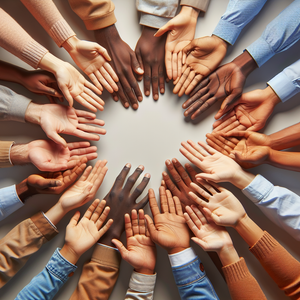UX Design for Social Impact: Careers that Change the World

At its core, UX design is about enhancing the interaction between users and technology by addressing their needs, preferences, and pain points. In the realm of social impact, this discipline becomes even more critical as it aims to create solutions that uplift marginalized communities, enhance accessibility, and improve overall quality of life. UX designers can develop applications and tools that address significant issues, such as educational disparities, healthcare accessibility, and civic engagement.
Key Areas of Focus for UX Designers in Social Impact
UX designers play a crucial role in helping NGOs effectively communicate their missions and engage their audiences. By redesigning donation platforms or educational materials, designers can streamline the giving process and enhance the overall user experience. For instance, a UX researcher may conduct interviews with potential donors to identify barriers in the donation process, leading to a more user-friendly platform that increases contributions to vital programs.
Educational Technology
The rise of educational technology (edtech) has revolutionized how learning is delivered, particularly in under-resourced areas. UX designers in this field focus on creating platforms that are not only intuitive but also cater to diverse learning styles. A noteworthy example includes the development of mobile applications designed for students who lack access to traditional educational resources. By prioritizing user needs and incorporating gamification elements, designers can foster greater engagement and retention among learners.
Healthcare Solutions
With the increasing emphasis on digital health, UX designers are now more involved in improving healthcare experiences. This includes designing user-friendly interfaces for telehealth systems and patient management applications. For example, a UX designer might work on simplifying the onboarding process for patients using a telemedicine service, ensuring that even the most technologically challenged individuals can access healthcare services easily.
Civic Tech
Civic tech initiatives aim to enhance public engagement and foster better communication between citizens and their governments. UX designers contribute to these efforts by creating platforms that facilitate dialogue and feedback. Projects such as online voting systems or community consultation apps illustrate how effective UX can strengthen democracy and encourage civic participation, ultimately leading to more informed and engaged communities.
Skills Required for UX Roles in Social Impact
While the core competencies of UX design—such as user research, wireframing, and prototyping—are necessary, aspiring social impact designers should also cultivate additional skills: Empathy and Cultural Sensitivity: Understanding the diverse backgrounds and unique challenges of users is essential for crafting effective solutions that resonate with their needs. Collaboration with Stakeholders: Engaging with community members, NGOs, and other stakeholders is vital for gathering valuable insights and ensuring that designs fulfill their intended purpose. Adaptability: Social impact projects often encounter resource constraints and shifting needs, necessitating a flexible and innovative approach from UX designers.
Inspiring Stories of UX Designers Making a Difference
Numerous UX designers have made significant strides in social impact, showcasing the potential of their work. One example is a designer who developed a mental health application for young people. By actively seeking user feedback, they incorporated features that promote community support and peer interaction, resulting in an app that not only provides essential resources but also fosters a sense of belonging among users. Another compelling story comes from a team of designers collaborating with an NGO focused on clean water access. They developed an interactive map enabling communities to locate safe water sources, empowering residents with crucial information to enhance their health and well-being.
As the demand for social impact initiatives continues to grow, so too does the need for UX designers who are committed to making a difference. By harnessing their skills to tackle societal challenges, these professionals can lead the charge in creating solutions that improve lives and empower communities around the globe. For those seeking a career that transcends traditional boundaries, the realm of UX design for social impact offers an exciting pathway to change the world—one thoughtful design at a time. Whether through nonprofit collaborations, educational technologies, or civic engagement platforms, a career in UX design can indeed be a transformative force for good.
UX Researcher for Nonprofits
NGOs, foundations, and social enterprises
Core Responsibilities
Conduct user interviews and surveys to gather insights on donor motivations and barriers.
Analyze user data to inform design decisions for nonprofit websites and donation platforms.
Collaborate with cross-functional teams to create user personas and journey maps that reflect the needs of targeted communities.
Required Skills
Proficiency in qualitative and quantitative research methods.
Strong analytical skills with experience in data visualization tools (e.g., Tableau).
Empathy and cultural sensitivity to effectively engage with diverse user groups.
UX/UI Designer for Educational Technology
Edtech companies, educational NGOs, and online learning platforms
Core Responsibilities
Design intuitive and accessible user interfaces for educational platforms catering to diverse learning needs.
Develop prototypes and conduct usability testing to refine educational tools and applications.
Collaborate with educators and learners to ensure the design meets specific educational goals and enhances user engagement.
Required Skills
Strong understanding of instructional design principles and user-centered design.
Experience with design software (e.g., Sketch, Figma) and prototyping tools (e.g., InVision).
Familiarity with gamification techniques to enhance learning experiences.
UX Designer for Healthcare Applications
Telehealth startups, healthcare providers, and medical software companies
Core Responsibilities
Create user-friendly designs for telehealth platforms and patient management systems.
Conduct user testing sessions with patients to identify usability issues and gather feedback for improvements.
Collaborate with healthcare professionals to ensure designs meet industry standards and enhance patient care.
Required Skills
Knowledge of healthcare regulations (e.g., HIPAA) and user privacy considerations.
Experience with accessibility design principles to cater to users with varying abilities.
Proficiency in wireframing and prototyping tools specific to healthcare applications.
Civic UX Designer
Civic tech organizations, local governments, and advocacy groups
Core Responsibilities
Design platforms that facilitate citizen engagement with local government initiatives and community feedback.
Develop interactive tools for public consultations and surveys to gather community input.
Analyze user feedback to iterate on designs and improve civic engagement strategies.
Required Skills
Strong understanding of civic technology and public policy processes.
Experience with community outreach and participatory design methods.
Ability to communicate complex concepts to non-technical stakeholders effectively.
UX Strategist for Social Impact Initiatives
Social impact consultancies, nonprofit organizations, and philanthropic foundations
Core Responsibilities
Lead strategic design initiatives that align UX goals with overarching social impact objectives.
Facilitate workshops with stakeholders to define project goals and metrics for success.
Create design roadmaps that prioritize user needs and community engagement efforts.
Required Skills
Experience in strategic planning and stakeholder management.
Strong knowledge of metrics and KPIs for measuring social impact through design.
Excellent communication and presentation skills to advocate for user-centered design principles.


